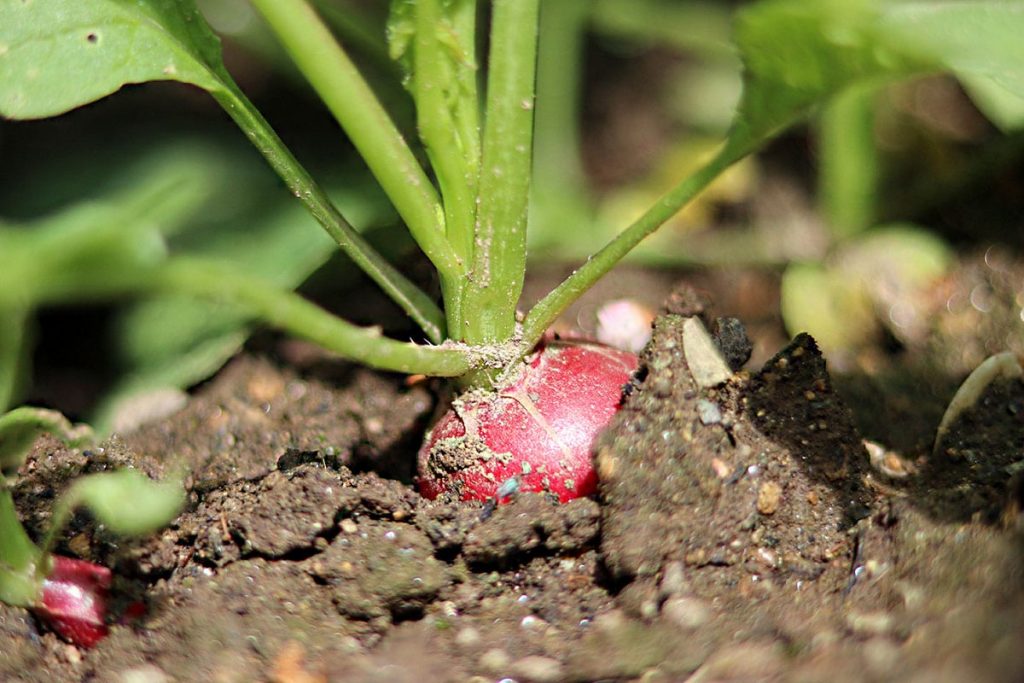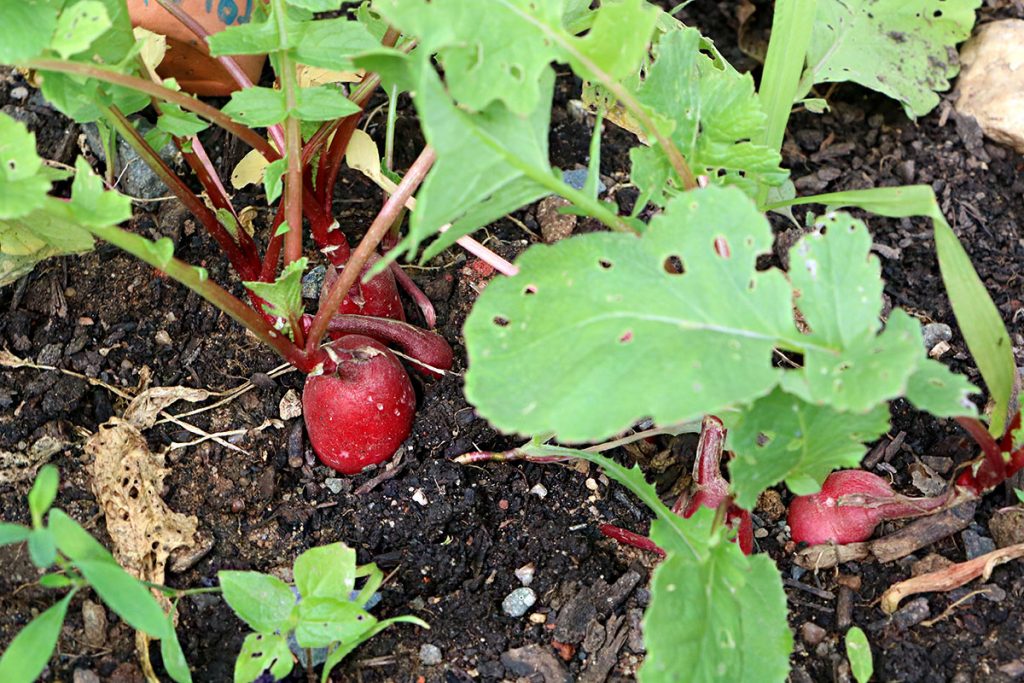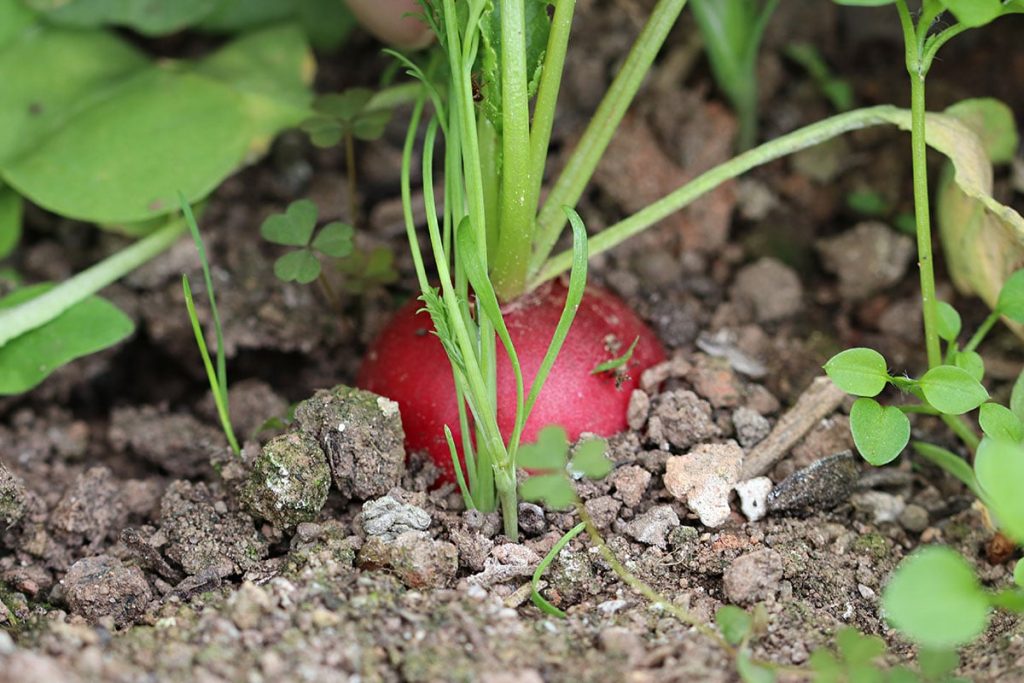Radishes are a fast growing and easy to grow vegetable. They bring color and variety to the table and are also very healthy. But when can you start harvesting radishes?
Contents
- 1 Do not miss harvest time
- 2 Summer varieties ready for harvest about four weeks after sowing
- 3 Harvesting simple and uncomplicated
- 4 Short-term and permanent storage
- 5 Frequently asked questions
- 6 Are radishes still edible during flowering?
- 7 How to protect the tubers from the cabbage or radish fly?
- 8 Can other parts of the plant be used?
- 9 Author
Do not miss harvest time
In order for radishes (Raphanus sativus var. sativus) to develop optimally, care should be taken to ensure optimal conditions during cultivation. In particular, drought should be avoided, it would adversely affect consistency and taste. As a rule, sowing can be done until September and harvesting until October/November, depending on the variety.

Summer varieties ready for harvest about four weeks after sowing
- growing period in spring or early fall somewhat longer
- about six to eight weeks
- time window for harvesting is also narrow
- in spring and early fall about ten days
- in summer only up to four days
- do not leave radishes in the ground too long
- otherwise loss of flavor and consistency
- ready for harvesting from a diameter of two to three centimeters
- tubers are most aromatic now
- upper ends of the ripe tubers usually already protrude from the ground
The best time of day to harvest radishes is late afternoon. This is because the nitrate content in the tubers is highest in the morning and at night. During the day, with the help of sunlight, the root vegetable then stores the nitrate stored in the tubers in the plant tissue. As a result, the nitrate content is lowest in the afternoon and the vitamin content is highest.
Tip: By staggering sowing about every two to three weeks and choosing the right variety, you can harvest radishes continuously until the first frost.
Harvesting simple and uncomplicated

Harvesting radishes is completely uncomplicated and can be done without any tools. When the time is right, first loosen the soil around the small tubers. Then grab the plants at the base of the leaves and pull them out of the ground with light back-and-forth movements. Then remove any loose soil, cut off the leafy greens and roots, and rinse the radishes under running water. Now they can be eaten fresh immediately or, after they have dried, stored or kept appropriately.
Short-term and permanent storage
Storage in the refrigerator
Radishes contain a lot of water, which is lost very quickly during storage, they dry out. The flavor-forming mustard oils are also gradually degraded. For short-term storage, the refrigerator is suitable. Wrap the cleaned and defoliated radishes in a damp cloth and place them in the vegetable compartment of the refrigerator. Root and leaves are removed, as they draw moisture from the tubers and make them shriveled. This will keep them fresh for about two to three days.
In the freezer

To freeze radishes, they should be fresh and dry. After removing the cabbage and roots, place them in suitable freezer cans or freezer bags and seal them tightly. Frozen, these root vegetables can be kept for between six and eight months. They should always be thawed in a closed container. Leaving them to air dry will cause them to dry out and become less juicy.
Tip: Radishes should be absolutely dry before freezing. Residual water on the tubers would freeze into ice and affect the quality of the small tubers.
Frequently asked questions
Are radishes still edible during flowering?
The right time of harvest is crucial for the quality of this root vegetable. Under no circumstances should the tubers remain in the ground too long. As soon as they bloom, not only the typical taste is lost but also the inside of the tubers becomes woody and inedible.
How to protect the tubers from the cabbage or radish fly?
The best protection is provided by special crop protection nets. They should be so close-meshed that the radish fly cannot pass through them. It is best to place them immediately after sowing to prevent egg laying.
Can other parts of the plant be used?
You can harvest not only the radishes, but also the leaves and even the seed pods. Both the leaves, which also contain mustard oil, and the seed pods are edible and can be used as an ingredient in fresh salads.

